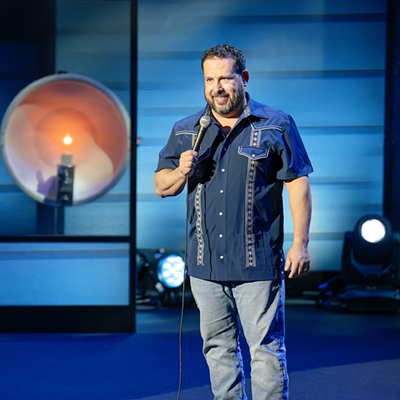Arizona is stuck in the heated center of the immigration debate, and after years of failed strategies, it's hardly surprising that the debate led to an effort to build a wall along the U.S.-Mexico border.
But a new documentary—made by filmmaker and actor John Carlos Frey—that follows the construction of that wall makes the case that we need to put the wall on hold, and instead seek out a truly effective solution.
The 800 Mile Wall documents the construction of the new border wall, a project that has already proven to be extremely costly and far too deadly. Frey's previous films (The Gatekeeper, The Invisible Mexicans of Deer Canyon) also explore the complex struggles of migrants who cross the U.S.-Mexico border and live as undocumented workers. However, The 800 Mile Wall has particularly strong ties to Tucson. Including interviews with local humanitarian workers, immigration experts and politicians, the 90-minute film offers a comprehensive look at the events that got us into this situation—and shows why we so desperately need to find a way out.
Since construction of the wall began, more than 5,000 migrant bodies have been recovered from the desert; however, the exact death toll along the U.S.-Mexico border is impossible to know.
"The more walls we have, the more deaths we have," declares Sue Goodman, the executive director of Humane Borders, a local volunteer organization responsible for setting up water stations in the desert to help thirsty migrants. She explains that the first border walls, built in the 1990s in San Diego and El Paso, were successful at keeping immigrants from crossing in those urban areas. But by eliminating these urban routes, immigrants are now left with no choice but to cross over the border in the wilderness—meaning migrants have been forced into dangerous and deadly territory.
Most supporters of the wall hope that the barrier will deter illegal entry attempts into the United States, especially when combined with high-tech surveillance towers, new retrofitted vehicles, ground sensors and an increased border patrol presence overall. However, Goodman says these efforts are unlikely to be successful.
"Surveillance can't detain," Goodman says. As a result, she—along with volunteers at Humane Borders and other organizations working along the border—believes "there is no benefit" to the wall.
Since putting up their first water station in 2001, Humane Borders has been a leader of local humanitarian efforts to put an end to border fatalities and come up with a real, equally beneficial border policy. Humane Borders is motivated by faith to help find a safe, practical and effective immigration policy, and to prevent migrant deaths along the border until one is found. In order to do so, they operate more than 80 water stations near the border. Along with large barrels of water, each station is equipped with first-aid kits, emergency rations and, in the winter, warm clothes.
The screenings of The 800 Mile Wall at the church that doubles as Humane Borders' headquarters will bring together efforts to inform the community, offering members of the public a chance to discuss and formulate possible solutions to a problem facing the entire country.
Although the film does not offer its own concrete solution to our immigration dilemmas, Goodman sees the film as being motivational. She says it "inspires people to do the right thing" and to "look for a more creative solution."
Frey seems to agree. In The 800 Mile Wall, he asks, "Does it work? Do we need to spend billions to build fencing and technology? Should we do anything about migrant deaths? Is there a solution?"








